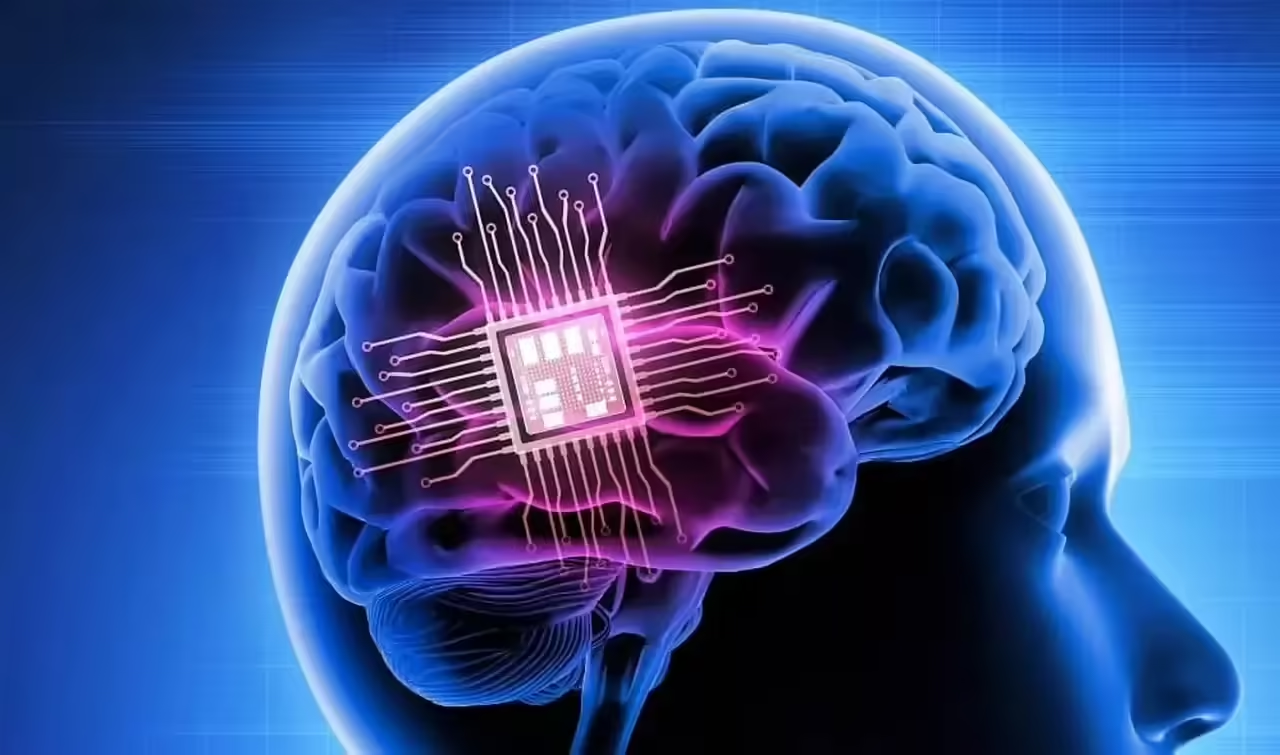
In the ever-evolving landscape of technological innovation, few companies have captured the imagination and intrigue of the world quite like Neuralink. Founded in 2016 by entrepreneur and visionary Elon Musk, Neuralink has embarked on an audacious mission: to bridge the gap between the human brain and computers. This ambitious endeavor holds the promise of unlocking unprecedented capabilities, transforming the way we interact with technology, and even addressing neurological conditions that have plagued humanity for centuries.
At its core, Neuralink seeks to create cutting-edge brain-machine interfaces (BMIs) that can seamlessly connect the human brain with computers and other digital devices. Musk, known for his ventures into space with SpaceX and electric vehicles through Tesla, believes that merging the human brain with AI (Artificial Intelligence) is essential to ensure that humans remain relevant in an increasingly AI-driven world.
Neuralink’s mission is to augment human cognition, address neurological disorders, and ultimately, enable humans to communicate directly with computers and other devices using their thoughts. This vision of a symbiotic relationship between humans and AI promises to revolutionize not only healthcare but also fields like communication, entertainment, and education.
To achieve its lofty goals, Neuralink has been developing and refining a range of innovative technologies, including implantable brain devices. These devices, often referred to as “Neuralink chips,” are designed to be implanted into the brain, allowing for direct communication between neurons and external devices.
The potential applications of this technology are vast. For individuals with paralysis or severe neurological conditions, Neuralink’s BMIs could offer a lifeline, restoring lost motor functions and enabling them to regain independence. Additionally, these interfaces have the potential to enhance memory, cognition, and even allow for direct brain-to-brain communication.
While the promise of Neuralink is undeniably exciting, it also raises important ethical and societal questions. Issues related to privacy, security, and the potential for misuse of brain data must be carefully addressed as the technology continues to advance.
The Brain Chip Revolution: Exploring How Neuralink’s Brain Chips Are Transforming Brain-Machine Interfaces
In the realm of cutting-edge technology, one name has emerged as a vanguard of innovation: Neuralink. Founded by visionary entrepreneur Elon Musk, Neuralink is leading the charge in revolutionizing the way we connect our brains to machines. At the heart of this technological marvel are the brain chips developed by Neuralink, which promise to redefine the landscape of brain-machine interfaces (BMIs) and open the door to a future where humans interact with technology in ways previously thought to be science fiction.
The Power of Brain-Machine Interfaces
To appreciate the impact of Neuralink’s brain chips, it’s essential to understand the significance of BMIs. These interfaces represent the bridge between the human brain and external devices, allowing for seamless communication between the two. While traditional methods of interaction with computers involve physical interfaces like keyboards or touchscreens, BMIs enable direct communication between the brain and machines. This paradigm shift holds profound implications for various fields, from healthcare to communication and beyond.
Neuralink’s Vision
Neuralink’s mission is ambitious yet straightforward: to develop and deploy advanced BMIs that can significantly augment human capabilities. Elon Musk, known for his innovative endeavors in space exploration and electric vehicles, firmly believes that BMIs are critical for humans to keep pace with the rapid advancements in artificial intelligence (AI). The vision is to empower individuals with the ability to control digital devices, communicate effortlessly, and even overcome debilitating neurological conditions.
The Brain Chip: A Technological Marvel
At the core of Neuralink’s revolutionary approach is the brain chip—a marvel of miniaturization and engineering. These implantable devices are designed to interface directly with the brain’s neural networks, enabling the transmission of signals between neurons and external devices. The chip’s electrodes are incredibly thin and flexible, ensuring minimal invasiveness during implantation.
One of the most remarkable aspects of Neuralink’s brain chips is their adaptability. As they are continually refined and improved, they can be customized to target specific regions of the brain, allowing for precise applications, such as restoring motor functions for individuals with paralysis or enhancing cognitive abilities.
Transforming Lives
The potential impact of Neuralink’s brain chips on society cannot be overstated. For individuals with spinal cord injuries, neurological disorders, or conditions like ALS, these chips could offer newfound hope for independence and improved quality of life. Moreover, they hold the promise of revolutionizing fields such as neuroscientific research, offering insights into the mysteries of the human brain that were once unimaginable.
Challenges and Ethical Considerations
As with any groundbreaking technology, the development and deployment of brain chips come with significant challenges and ethical considerations. Concerns about privacy, security, consent, and the responsible use of this technology must be addressed as it continues to evolve.
In the next installments of our exploration into Neuralink, we will dive deeper into the technology behind these brain chips, their potential applications, and the ethical considerations surrounding their use. We will also examine the broader societal impact of Neuralink’s visionary mission. The brain chip revolution is underway, and its implications are nothing short of extraordinary—so stay tuned as we unravel this remarkable journey into the future of brain-machine interfaces.
What Are Neuralink’s Brain Chips?: A Detailed Explanation of These Devices and How They Work
Neuralink’s brain chips, also known as Neuralink devices or simply “Neuralinks,” represent a groundbreaking innovation at the intersection of neuroscience and technology. These devices are designed to serve as a bridge between the human brain and external digital systems, opening up new possibilities for communication, medical treatment, and even human augmentation. To fully understand the significance of Neuralink’s brain chips, let’s dive into a detailed explanation of what they are and how they function.
The Anatomy of a Neuralink Device
At its core, a Neuralink device consists of several key components:
Implantable Brain Chip: The centerpiece of the Neuralink device is a tiny, implantable chip that contains a network of ultra-thin and flexible electrodes. These electrodes are designed to be inserted directly into the brain’s neural tissue.
Wearable External Unit: The brain chip is connected to an external wearable unit, often referred to as the “Link.” This unit is responsible for wirelessly communicating with the brain chip, processing neural signals, and transmitting data to external devices.
Software Interface: Neuralink’s software interface is a crucial part of the system. It facilitates communication between the brain chip, external units, and digital devices. This interface can be customized to perform various functions, depending on the intended application.
How Neuralink’s Brain Chips Work
The operation of Neuralink’s brain chips can be broken down into several key steps:
Implantation: A skilled surgical team performs the implantation procedure. A small incision is made in the skull, and the brain chip is carefully inserted into the desired region of the brain. Neuralink’s technology aims to make this procedure as minimally invasive as possible to reduce potential risks and complications.
Neural Electrode Array: The brain chip’s neural electrode array consists of numerous electrodes that are strategically positioned to interface with specific neural networks. These electrodes record electrical signals generated by neurons in the brain.
Signal Recording: Once implanted, the electrodes pick up electrical signals from neurons firing in the vicinity. These signals are incredibly low in amplitude but contain valuable information about brain activity.
Signal Processing: The wearable external unit, or Link, receives the recorded neural signals wirelessly from the brain chip. It processes and amplifies these signals, making them suitable for further analysis.
Data Transmission: Processed neural data is transmitted wirelessly to external devices, such as computers or smartphones, using secure and encrypted communication protocols. This data can then be used for a wide range of applications, from controlling digital interfaces to medical diagnosis and treatment.
Potential Applications
The versatility of Neuralink’s brain chips opens the door to numerous applications, including:
Medical Treatments: Restoring lost motor function in individuals with paralysis, treating neurological disorders, and monitoring brain health.
Human Augmentation: Enhancing cognitive abilities, memory, and learning.
Communication: Enabling direct brain-to-machine communication, potentially allowing for a new era of communication technology.
Challenges and Ethical Considerations
While the potential benefits of Neuralink’s brain chips are immense, they also raise complex ethical questions about privacy, security, consent, and the responsible use of brain data. Addressing these challenges is essential as the technology advances.
Neuralink’s brain chips represent a remarkable fusion of neuroscience and technology, with the potential to reshape our understanding of the human brain and how we interact with the digital world. As research and development continue, these devices hold the promise of unlocking new frontiers in human potential and medical treatment.
The Implantation Process: Detailing How a Neuralink Brain Chip Is Implanted and the Procedures Involved
The implantation of a Neuralink brain chip is a complex and delicate procedure that requires precision and expertise. This process marks the beginning of a potentially transformative journey for individuals seeking to benefit from the capabilities of Neuralink’s brain-machine interface (BMI). Below, we provide a detailed overview of how a Neuralink brain chip is implanted and the key steps involved.
Preoperative Planning:
Before the implantation procedure begins, extensive preoperative planning is essential. This phase involves:
Patient Assessment: Evaluating the patient’s medical history, neurological condition, and suitability for the procedure.
Brain Mapping: Identifying the specific brain region where the chip will be implanted and mapping the neural networks in that area. This step ensures precise placement and minimizes the risk of complications.
Anesthesia:
The patient is prepared for surgery by administering general anesthesia. This ensures that they are unconscious and pain-free throughout the procedure, eliminating discomfort and any potential movement during the surgery.
Surgical Incision:
A small incision is made in the scalp at a predetermined location. The exact location depends on the target brain region and the planned trajectory for the brain chip’s insertion. Surgeons take care to make the incision as small as possible to reduce the risk of infection and minimize post-operative scarring.
Burr Hole Creation:
Using specialized surgical tools, a small hole, known as a burr hole, is carefully drilled into the patient’s skull. The precise placement of this hole is critical to ensure accurate access to the brain region targeted for implantation.
Brain Chip Insertion:
The Neuralink brain chip, with its ultra-thin and flexible electrode array, is inserted through the burr hole and into the brain tissue. Surgeons rely on real-time brain mapping and guidance systems to ensure accurate placement. Neuralink’s technology aims to make this step minimally invasive to reduce trauma to the brain.
Electrode Deployment:
Once the brain chip is in place, the electrode array is gently deployed into the surrounding neural tissue. This array contains multiple electrodes that interface with the brain’s neural networks, allowing for the recording and transmission of neural signals.
Securement and Closure:
The brain chip is secured in place to prevent movement or displacement. This is typically achieved using biocompatible materials and surgical techniques. After securement, the incision in the scalp is closed with sutures or surgical staples.
Postoperative Monitoring:
Following the implantation procedure, the patient is closely monitored during the immediate postoperative period. This monitoring ensures that any potential complications, such as bleeding or swelling, are promptly addressed. The patient’s vital signs and neurological status are closely observed.
Recovery and Rehabilitation:
The patient undergoes a period of recovery and rehabilitation, which may involve physical therapy and neuromonitoring. This phase is critical for assessing the functionality of the brain chip and optimizing its performance for the patient’s specific needs.
It’s important to note that while the implantation of a Neuralink brain chip holds immense potential for medical and technological advancement, it also involves inherent risks and ethical considerations. As the technology continues to develop, ongoing research, rigorous safety protocols, and ethical guidelines will be essential to ensure the responsible and beneficial use of brain-machine interfaces in healthcare and beyond.







